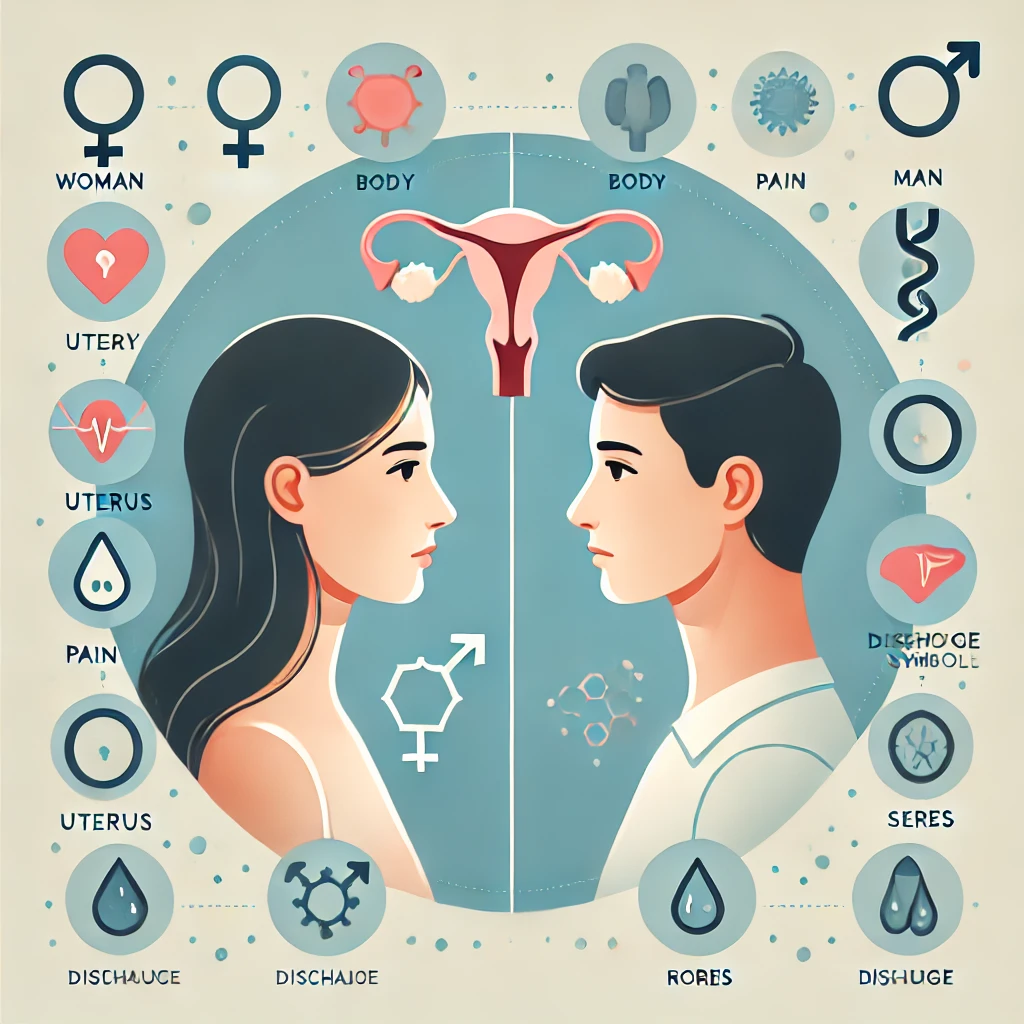
Sexually transmitted diseases (STDs) don’t always show up the same way in everyone. One of the most overlooked facts about STDs is that women often experience different — and less obvious — symptoms than men. This can delay diagnosis and treatment, leading to serious health consequences. In this article, we’ll break down the biological, social, and medical reasons behind this difference and why it matters for your health.
What Are STDs and How Do They Spread?
STDs are infections passed through sexual contact, including vaginal, oral, and anal sex. Some of the most common include:
- Chlamydia
- Gonorrhea
- Human papillomavirus (HPV)
- Herpes
- Syphilis
- HIV
Both men and women can get these infections, but the way symptoms appear — or don’t — can vary widely between genders.
How Biology Affects STD Symptoms
There are key biological differences between male and female bodies that impact how STD symptoms show up.
- Women have a larger mucosal surface area, which increases the chance of infection.
- The vagina and cervix are internal, making symptoms less visible.
- Hormonal cycles can mask or mimic STD symptoms, making them harder to detect.
Men, with external genitalia, are more likely to notice changes quickly — such as discharge, sores, or pain during urination — and may seek treatment sooner.
Why STDs in Women Are Often Hidden
STDs in women can easily go unnoticed or be mistaken for other common conditions like yeast infections or urinary tract infections (UTIs). Common hidden symptoms include:
- Unusual vaginal discharge
- Lower abdominal or pelvic pain
- Pain during sex
- Spotting or bleeding between periods
- Mild burning during urination
Because these signs can be subtle, many women don’t realize they have an STD until complications arise.
STD Symptoms in Men: Easier to Spot
Men are more likely to experience noticeable STD symptoms, such as:
- Discharge from the penis
- Burning during urination
- Visible sores or blisters
- Swelling or pain in the testicles
This makes early detection more likely, reducing the risk of long-term complications.
The Hidden Risk: Delayed Diagnosis in Women
Women are more likely to suffer serious long-term effects from untreated STDs, including:
- Pelvic inflammatory disease (PID)
- Infertility
- Ectopic pregnancy
- Chronic pelvic pain
- Increased risk of HIV
According to the CDC, many cases of chlamydia and gonorrhea go undiagnosed in women until complications develop.
Social Factors: Why Women May Avoid Testing
It’s not just biology — social stigma plays a major role in the gap between symptoms and diagnosis. Women may:
- Feel shame or embarrassment about seeking STD testing
- Dismiss symptoms as minor or unrelated to STDs
- Lack access to affordable sexual health care
- Be less likely to receive comprehensive sexual health education
Breaking these barriers is critical to protecting women’s health.
Prevention Tips for Everyone
Whether you’re sexually active or just learning more, prevention is key. Here’s how to protect yourself:
- Get tested regularly, especially if you have new or multiple partners
- Use condoms and dental dams consistently and correctly
- Talk openly with partners about sexual health and testing
- Stay informed about the signs and risks of STDs
- Get vaccinated — especially for HPV and Hepatitis B
Final Thoughts + Call to Action
STD symptoms don’t look the same for everyone — especially between men and women. For women, the signs are often subtle or mistaken for something else, leading to delayed treatment and serious health risks. But knowledge is power. Regular testing, open communication, and proactive care can prevent long-term harm.
Take charge of your sexual health. If it’s been a while since your last screening, schedule a test today — even if you feel fine. Better safe than sorry.



